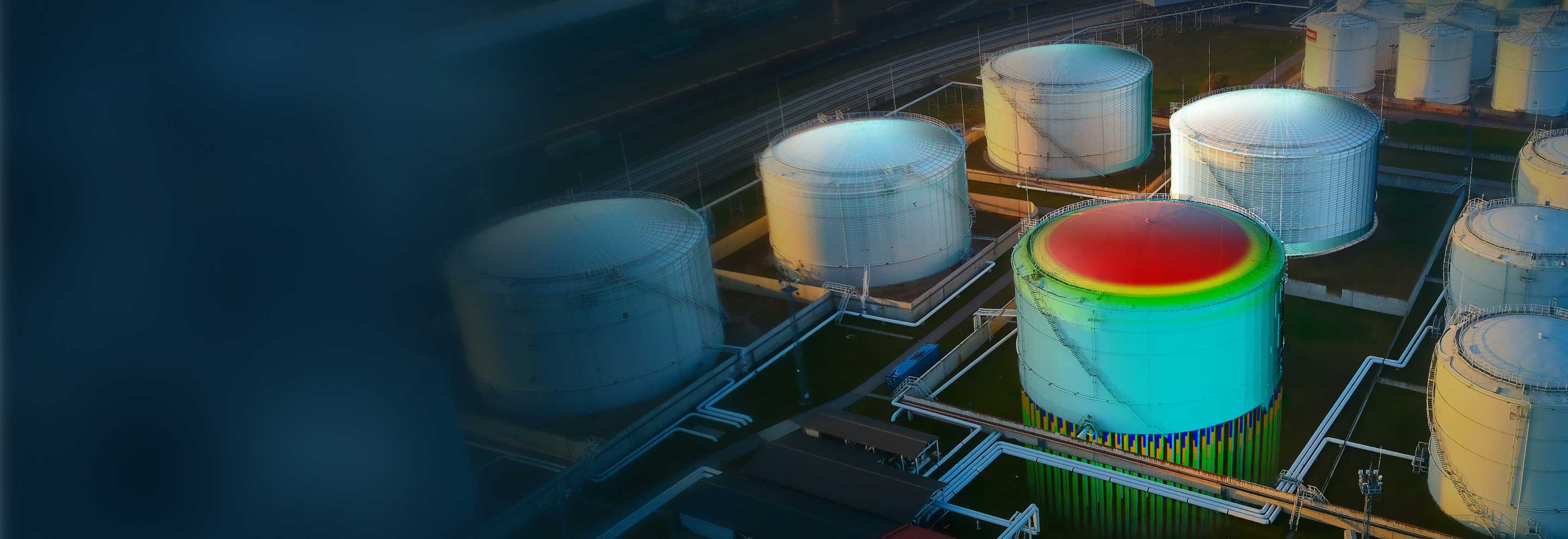The Large-scale LNG Storage Tank Finite Element Analysis Software primarily focuses on the simulation, analysis, and verification of high-stilt reinforced concrete full containment tanks, whose system is consisted of the inner tank, outer tank, thermal insulation system, auxiliary equipment, liquid contents, and the foundational structure. It involves various structural elements such as reinforced concrete, steel frameworks, soil bases, and other auxiliary structures.
The software enables the simulation of conventional structures, including structural and thermal analysis, with the following general functionalities:
- Geometry Modeling: Parameter definition, 2D sketching, feature modeling, Boolean operations, and model import.
- Meshing: Point, line, triangle, quadrilateral, tetrahedral, hexahedral meshing, supporting methods like sweeping, mapping and local adaptive meshing.
- Element Types: Beam, truss, solid, and other conventional elements, supporting advanced elements such as active/inactive elements, solid shell elements, discrete elements, and super-elements, etc.
- Constraint Loading: Conventional constraints and loading conditions such as temperature, convection, displacement, and forces, etc.
- Assembly Connections: Standard contact, tied contact, multi-point constraint connections and coupling, etc.
- Result Visualization: Support commonly used structural/thermal result contour plots such as temperature, stress, strain, internal forces, etc. It also supports curve plots, slicing, and animation.
- Analysis Types: Perform linear, nonlinear, modal, response spectrum, buckling, transient/steady thermal, fluid-structure interaction, and other types of analyses.
The software facilitates fully automated modeling of the structure and simulation parameters based on the templates.
- It includes the inner tank, outer tank, reinforcement bars, liquid content, insulation layer, dome, suspended ceiling, pile foundation, and other auxiliary structures.
- It accounts for the interaction between piles and soil as well as direct coupling effects among different parts of the structure.
The software enables the rapid analysis of dozens of load cases and their combinations based on design requirements.
- It addresses various loading scenarios, including temperature change, prestress, dead load, live load, wind load, snow load, LNG hydraulic pressure, positive and negative design pressures, gas and water pressure tests, leakage, earthquake, explosion, impact, and fire, among others.
- It considers combined scenarios such as serviceability limit state (SLS), ultimate limit state (ULS) under regular conditions, and ULS under exceptional conditions.
- It allows for static, dynamic, stability, and other simulation analyses.
According to specific design requirements, the software can output a range of simulation results in various formats and generates comprehensive simulation reports, aiding users in their result validation process.
- It can output in various forms, including contour plots, curves, animations, data, etc.
- It can provide simulation results such as liquid sloshing, internal forces (bending moment, shear forces, and axial forces) and stresses in both concrete and steel structures, dome buckling loads, crack widths, structural deformations, foundation settlement, strength assessments for metal structures and reinforcements, concrete compressive strength.
- It can perform nonlinear verification calculations, evaluate resistance to external impact, and analyze tank structure failure and fracture.
- It offers a rapid comparative analysis based on real-world construction scenarios, aiding in selecting the most optimal design strategy.
